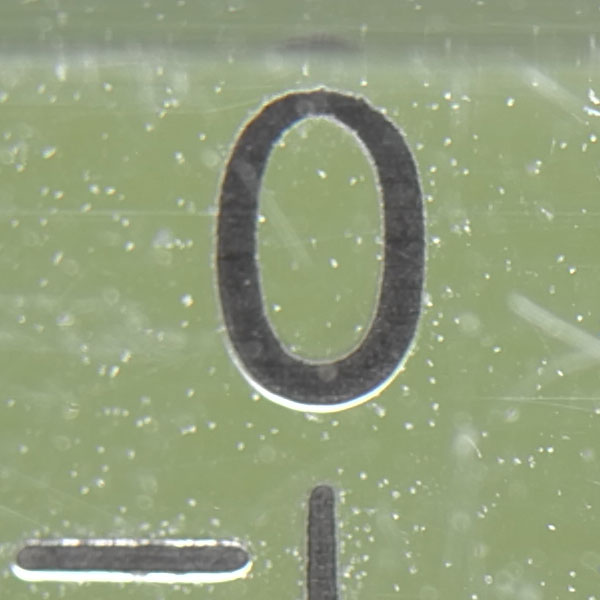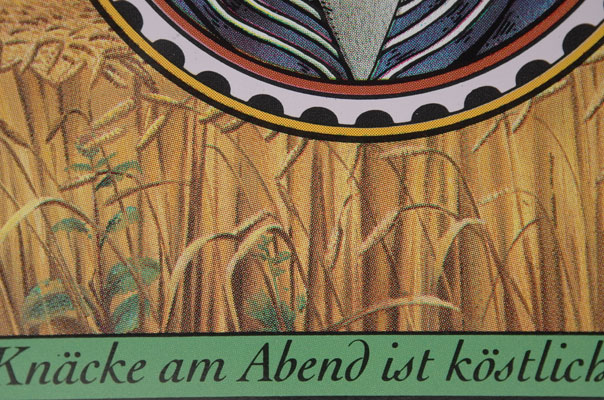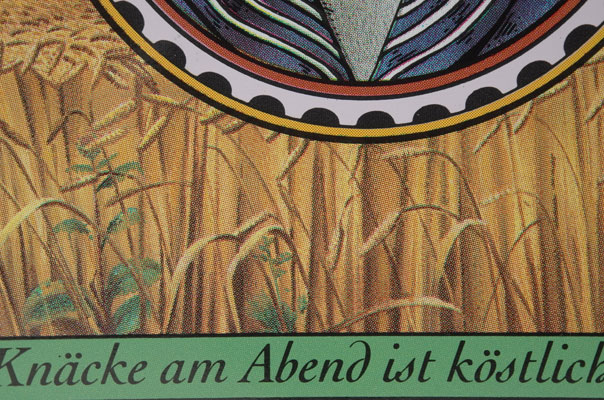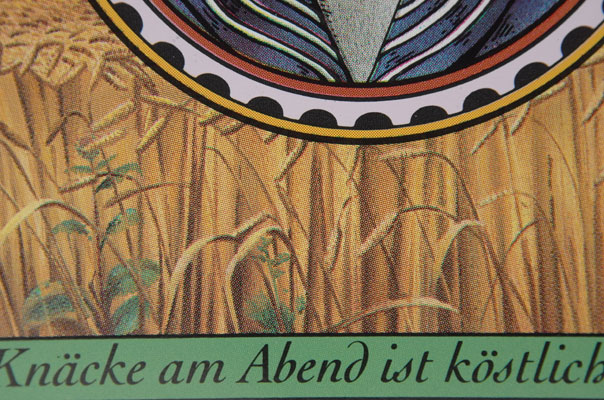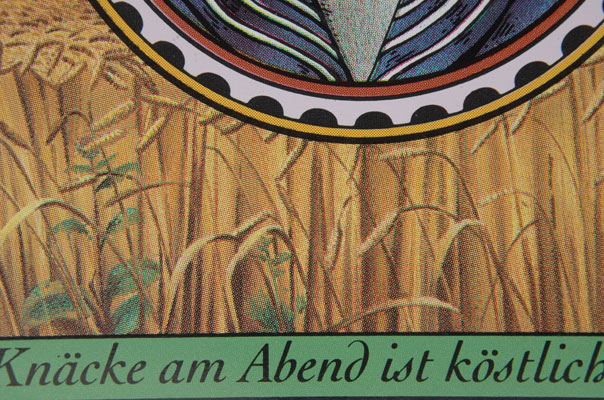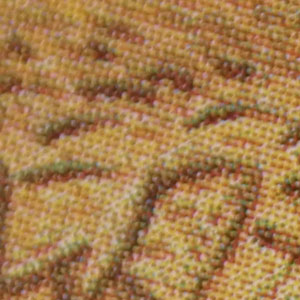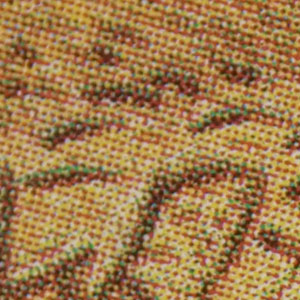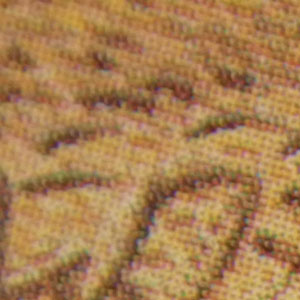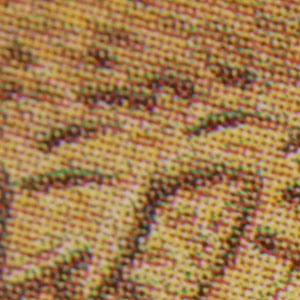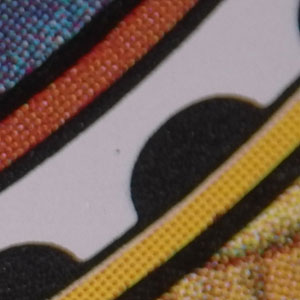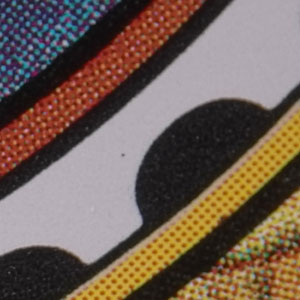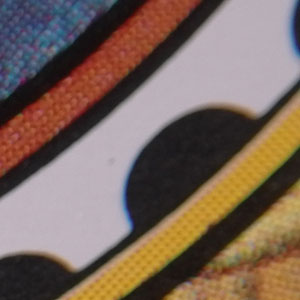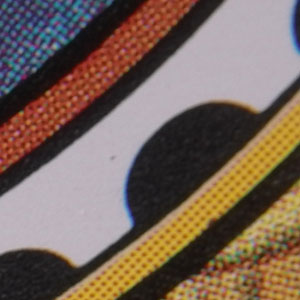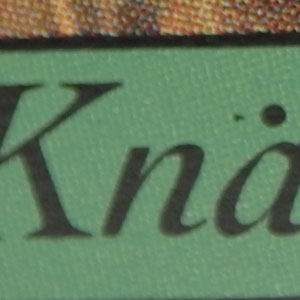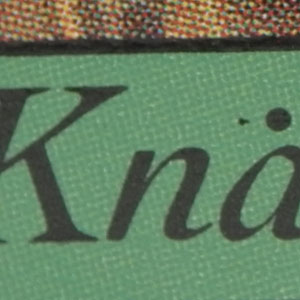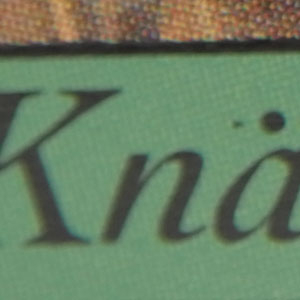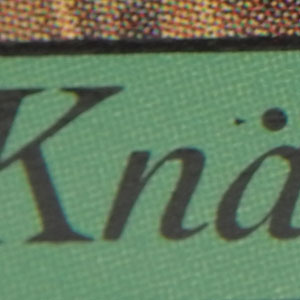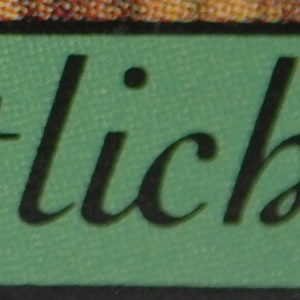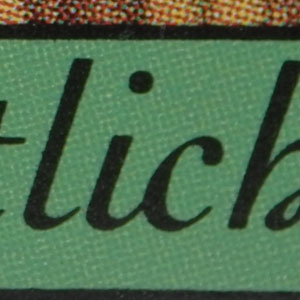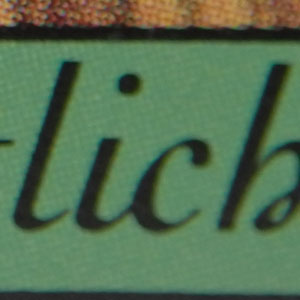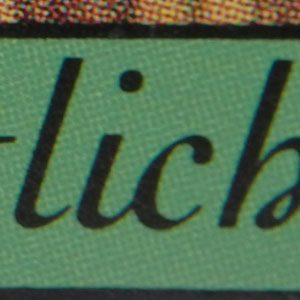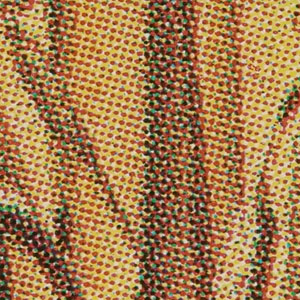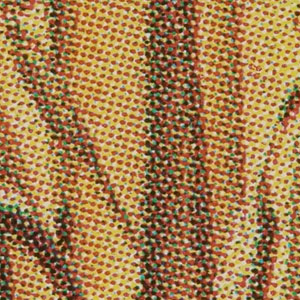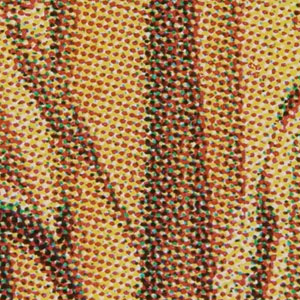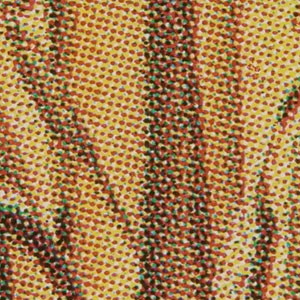Leica X Vario: Close-Up Lens Experiments - Part 3
Introduction | A few Remarks | Photos | "Evaluation" Photos | "Evaluation" Photos Take 2: Comparing Two Ways of Getting +10 Diopters | Photos: Finally +20 Diopters | Conclusions
Archive
This page discusses a +10 achromat, which is part of a Dörr slide duplicator that I bought in spring 2014. Here, I compare the Dörr +10 achromat with my Marumi +5 achromat, including doing the "horrible," namely using both achromats together. Moreover, I compare the +10 achromat with stacking a +5 achromat and a +5 close-up lens for achieving the same magnification (+10 diopters). Last but not least, I do the completely nonsensical and add a B+W +5 diopters close-up lens to the two achromats, thus achieving +20 diopters. However, I just show the results and do not make any further investigations into the achievable image quality.
This is just a quick-and-dirty comparison, primarily checking, which magnification can be achieved. My tests for judging sharpness were, at least in part, not adequate, but nevertheless hint at differences in image contrast.
Notes: Page Close-up Lens Experiments - Summary offers a summary of my close-up experiments with the Leica X Vario. Close-up tests without close-up lenses are presented on page Leica X Vario: Close-Up Experiments - No Lens. Close-up tests with close-up lenses and some comparisons are presented on page Leica X Vario: Close-Up Lens Experiments - Part 1. Close-up tests with the Marumi +5 achromat and comparisons with close-up lenses are presented on page Leica X Vario: Close-Up Lens Experiments - Part 2.
Introduction
In spring 2014, I bought a Dörr slide duplicator (see Figures below) to investigate whether I can copy slides with the Leica X Vario. Regrettably, I had overlooked that a lens with a "real" focal length of about 70 mm is needed for this tool, not an "equivalent" one. As a results, the slide copies are only about 3200 x 2000 pixels in size (or about 6 Megapixels), which is too small for many purposes. I may nevertheless prepare a page with some information about this one day...
The Dörr slide duplicator includes a +10 achromat, which can be removed and used separately as a close-up lens (see Figures below). You can even stack it with the Marumi +5 achromat, resulting in +15 diopters. Whether this makes sense is another story and part of the explorations on this page. If I want to, I can even add a B+W +5 close-up lens to this combination, thus arriving at +20 diopters. I show some results of this at the bottom of this page...
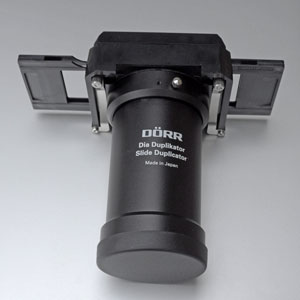 |
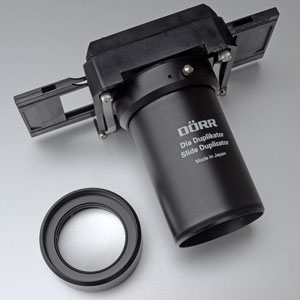 |
Figures: Dörr slide duplicator (left), ditto, achromat removed (right) (click images for larger versions)
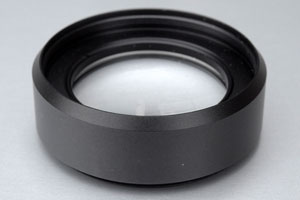 |
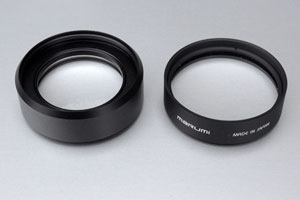 |
Figures: Dörr +10 achromat (left), Dörr +10 and Marumi +5 achromats side-by-side (right) (click images for larger versions)
Note: Hama and Dörr, and perhaps some other companies, too, sell this slide duplicator. They seem to be all the same (according to the look and the technical data).
Demonstrating Magnification
The following magnification tests were done with manual focus. Now, I include also a stacked combination that achieves even +20 diopters.
Note that, according to Firoze's investigations, on the Leica X Vario a slightly higher magnification can be achieved using autofocus.
Test 1
Reminder: Without an achromat or a close-up lens, the minimum object width for the Leica X Vario is 12 cm (minimum object size: 12 cm x 8 cm).
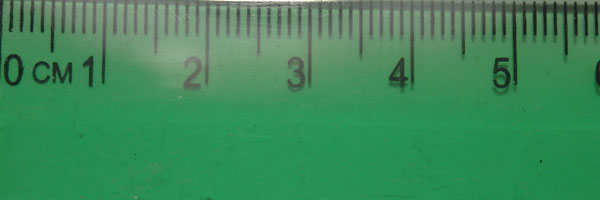
Marumi +5 achromat: minimum object width is ca. 6 cm
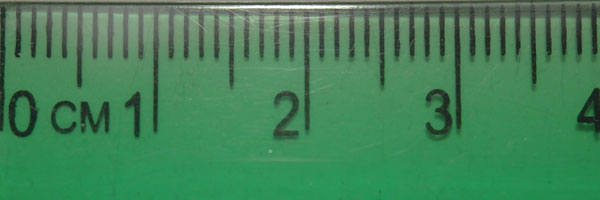
Dörr +10 achromat: minimum object width is ca. 3.9 cm (4 cm)
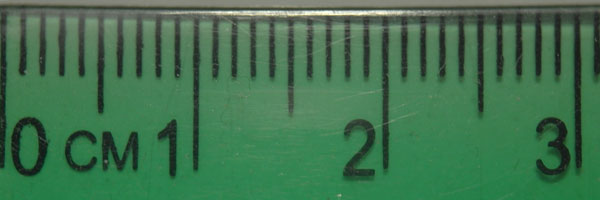
Marumi +5 and Dörr +10 achromats: minimum object width is ca. 3.1 cm
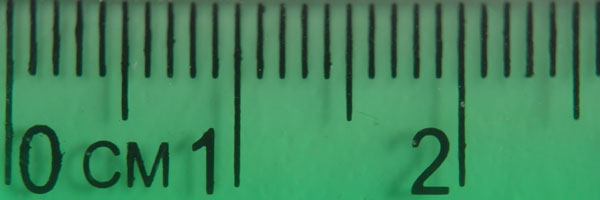
Marumi +5 and Dörr +10 achromats, plus B+W +5 close-up lens: minimum object width is ca. 2.6 cm
Test 2
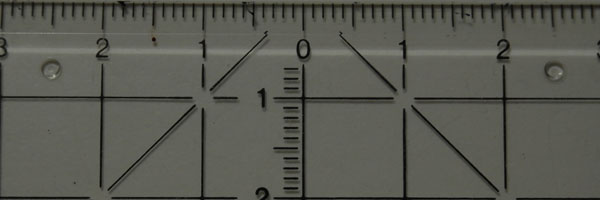
Marumi +5 achromat: minimum object width is ca. 6 cm
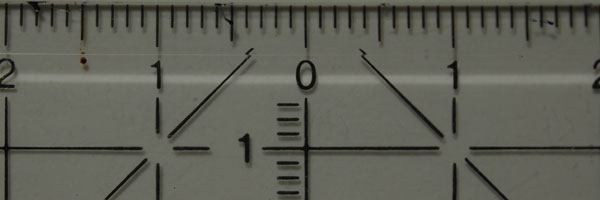
Dörr +10 achromat: minimum object width is ca. 4 cm
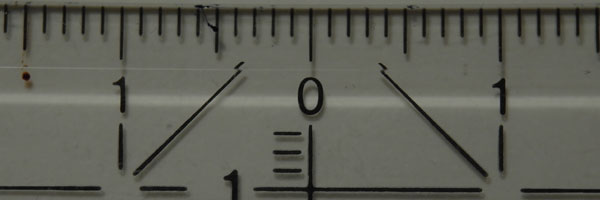
Marumi +5 and Dörr +10 achromats: minimum object width is ca. 3.1 cm
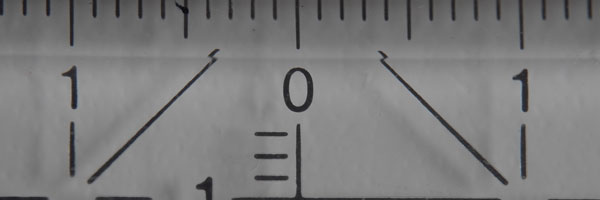
Marumi +5 and Dörr +10 achromats, plus B+W +5 close-up lens: minimum object width is ca. 2.6 cm
Calculating Magnification
From dkpeterborough (L-Camera-Forum) I adopt the way how magnification is calculated: Sensor width / object width = 23.6 [mm] / object width [mm] for APS-C. Here are my results for the combinations used on this page:
- No close-up lens : object width is ca. 12 cm > magnification = Sensor width / object width = 23.6 [mm] / 120 [mm] = 0.2 (about)
- Marumi +5 achromat: object width is ca. 6 cm > magnification = Sensor width / object width = 23.6 [mm] / 60 [mm] = 0.4 (about)
- Dörr +10 achromat: object width is ca. 4 cm > magnification = Sensor width / object width = 23.6 [mm] / 40 [mm] = 0.6 (about)
- Marumi +5 and Dörr +10 achromats: object width is ca. 3.1 cm > magnification = Sensor width / object width = 23.6 [mm] / 31 [mm] = 0.75 (about)
- Marumi +5 and Dörr +10 achromats, plus B+W +5 close-up lens: object width is ca. 2.6 cm > magnification = Sensor width / object width = 23.6 [mm] / 26 [mm] = 0.9 (about)
Relationship between Diopters and Magnification
The following table and diagram show my empirical results regarding the relationship between diopters and the resulting magnification for the Leica X Vario (collected from various pages in this site):
Diopters |
0 |
1 |
2 |
3 |
4 |
5 |
6 |
7 |
9 |
10 |
12 |
15 |
20 |
Magnification |
0.2 |
0.24 |
0.286 |
0.325 |
0.366 |
0.4 |
0.445 |
0.48 |
0.53 |
0.6 |
0.65 |
0.75 |
0.9 |
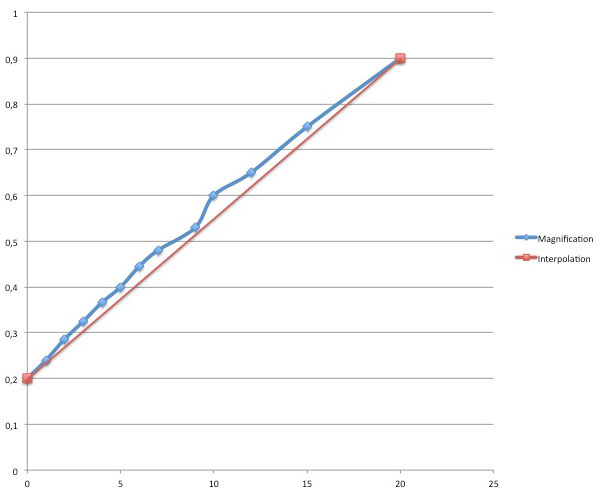
As you can see, some of the empirical results may be a little off-track...
A few Remarks...
Compared with a close-up lens, an achromat is large and heavy. Moreover, a step-up ring adds to its size and weight, as is needed for the Dörr +10 achromat. If you even stack achromats, and then possibly add a close-up lens to that combination, this assembly gets too heavy for the Leica X Vario, and you better use manual focus and support the lenses with your hand or otherwise.
The step-up ring presents a problem that I already point out for the Marumi achromat. At a focal length of around 50 mm (equiv.), the X Vario's lens assumes its shortest length. With the achromat and step-up ring mounted, the step-up ring hits the lens body here, and you cannot zoom any further, irrespective of whether you zoom from wide to tele or vice versa. If you have such a setup, too, please do not use any force to zoom further.
Note: You can unscrew the lens-step-up ring combo a little bit in order to zoom further.
If you use the achromat with step-up ring together with, for example, the B+W +5 close-up lens in order to achieve an even higher magnification, there is no such problem, because this close-up lens (and my others as well) slips "into" the lens body (like the front of the lens).
In the following, I will will show some example photos, some test photos, and finally briefly discuss how the Dörr achromat fares in comparison with the Marumi achromat and what happens if you combine both or even add a close-up lens to this assembly.
Photos
The following sample photos were taken with the Dörr +10, the Marumi +5 achromat, both achromats, and finally both achromats and a B+W +5 close-up lens, to demonstrate the kinds of macro photos that you can use them for on a Leica X Vario. The photos were taken with manual focus (distance 30 cm, 70 mm focal length equiv., mostly ISO 1600). Note that these photos primarily serve to demonstrate the achievable magnification, not the sharpness. Using both achromats (and more...) together requires a tripod for acceptable results (high ISO values may help a little if you do not use a tripod...).
Motif 1
For this motif, it looks as if I did not try to achieve maximum magnification...

Marumi +5 achromat

Dörr +10 achromat
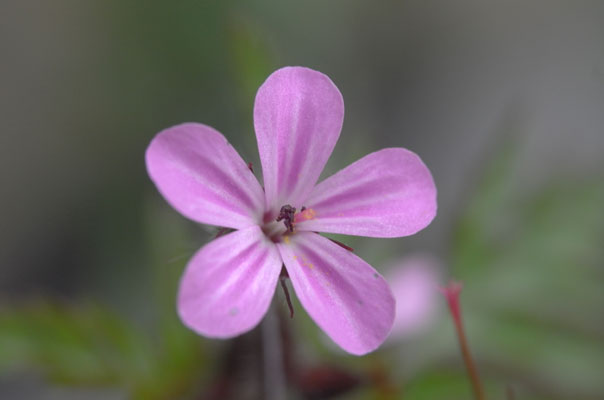
Marumi +5 and Dörr +10 achromats

Marumi +5 and Dörr +10 achromats, plus B+W +5 close-up lens (different motif and day)
Motif 2

Marumi +5 achromat

Dörr +10 achromat

Marumi +5 and Dörr +10 achromats

Marumi +5 and Dörr +10 achromats (ISO 3200)
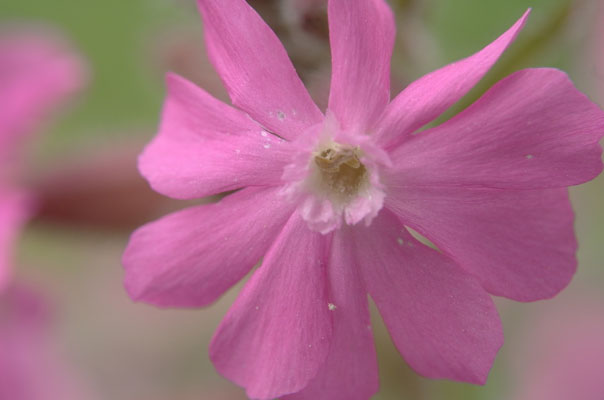
Marumi +5 and Dörr +10 achromats, plus B+W +5 close-up lens (different motif and day)
Motif 3

Marumi +5 achromat
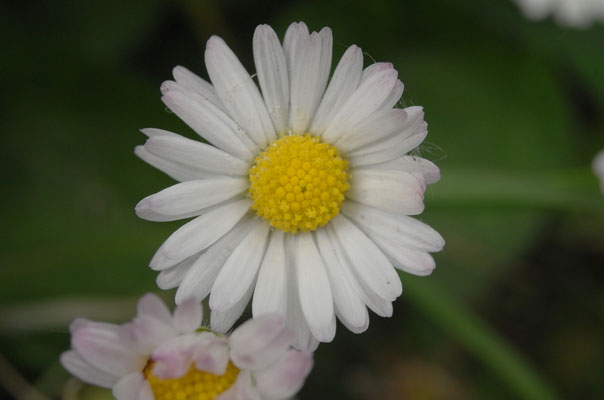
Dörr +10 achromat
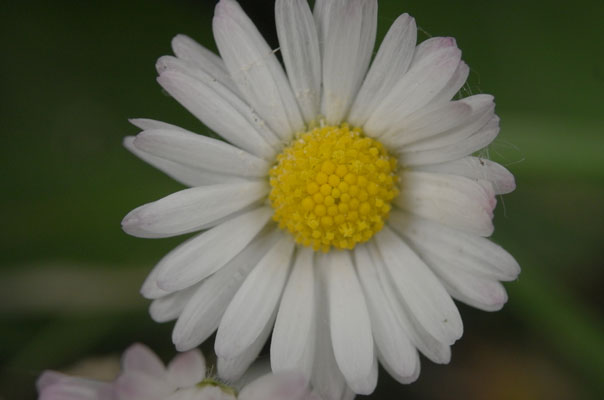
Marumi +5 and Dörr +10 achromats
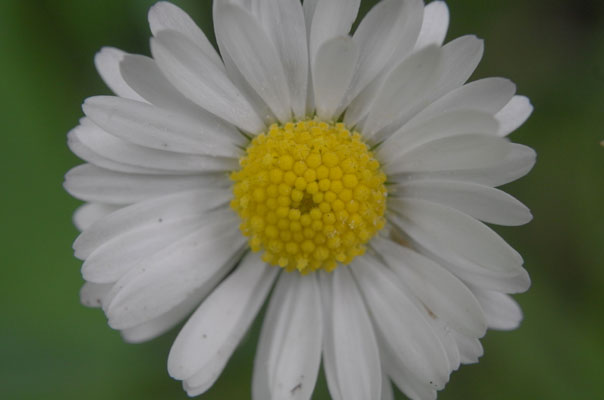
Marumi +5 and Dörr +10 achromats, plus B+W +5 close-up lens (different motif and day)
Motif 4 - More Precise Size Comparison
This series includes the +20 diopters assembly (two achromats, one close-up lens).
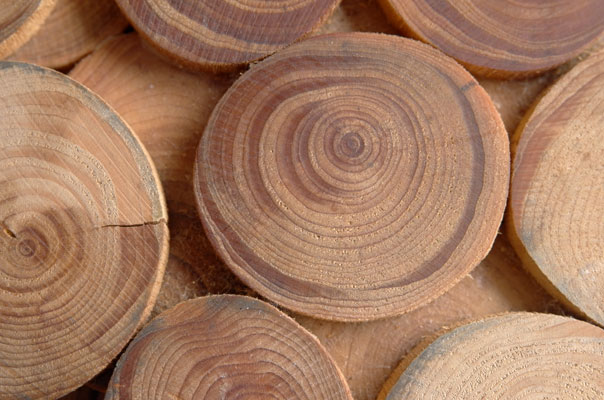
Marumi +5 achromat (+5)
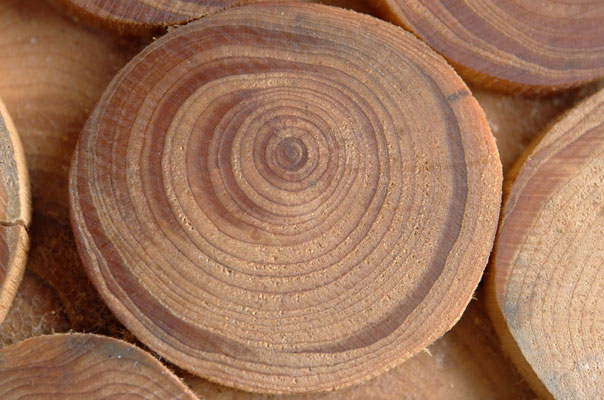
Dörr +10 achromat (+10)
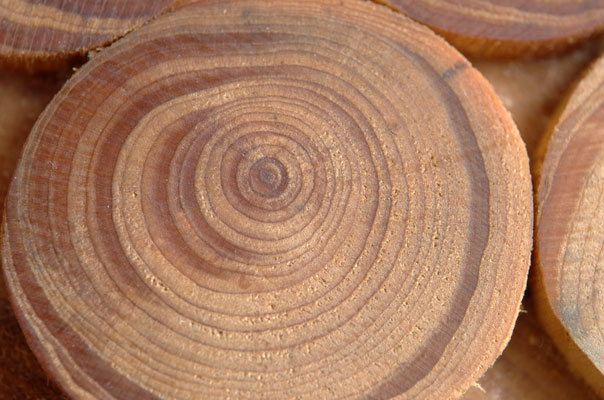
Marumi +5 and Dörr +10 achromats (+15)
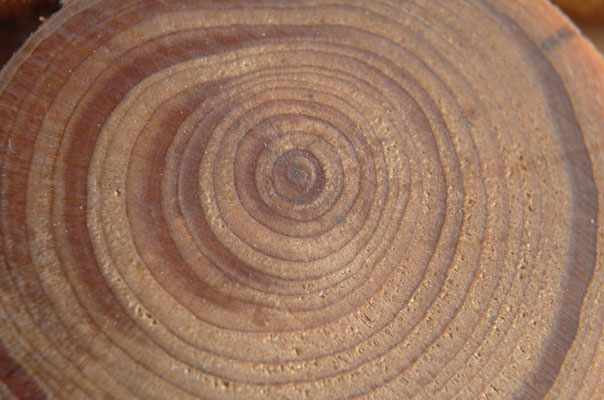
Marumi +5 and Dörr +10 achromats, plus B+W +5 close-up lens (+20) (different day)
Detail Comparisons
The following 100% sections of motif 3 show what you can expect from these achromats and their combination. Note that ISO was set fairly high to 1600. A more valid comparison should be done at ISO 100 or 200.
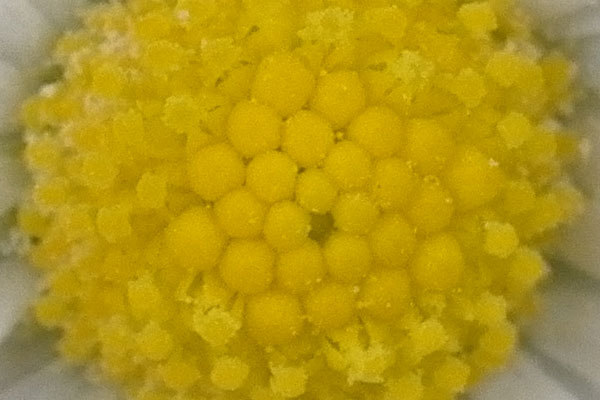
Marumi +5 achromat
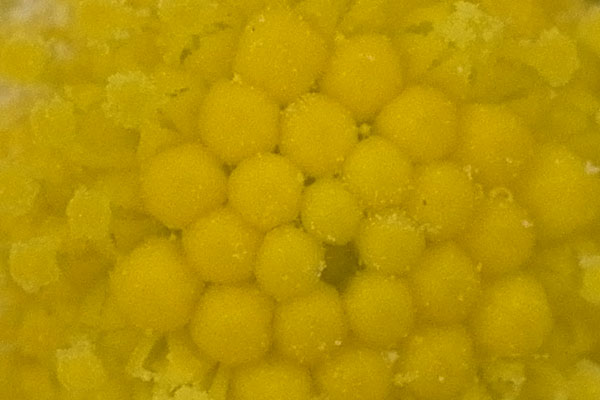
Dörr +10 achromat
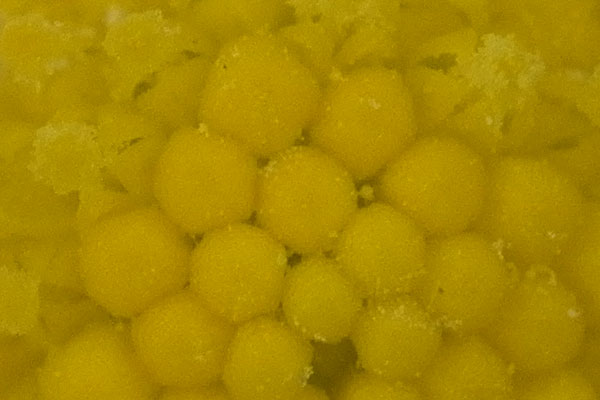
Marumi +5 and Dörr +10 achromat (+15 diopters)
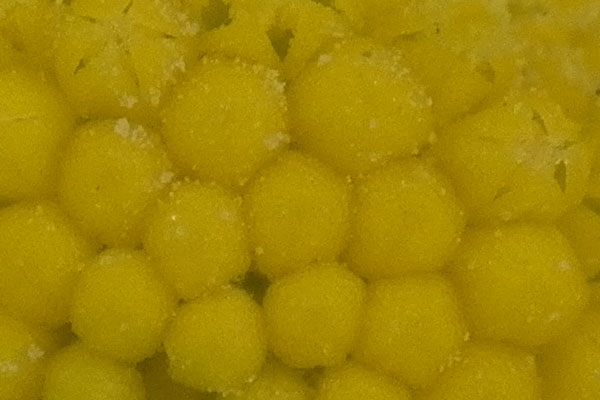
Marumi +5 and Dörr +10 achromat, plus B+W +5 close-up lens (+20 diopters)
"Evaluation" Photos
Admittedly, at the beginning, I found it very difficult to find any differences between the photos taken with the Dörr achromat, the Marumi achromat, and their combination. One reason for this difficulty may have been that I initially stopped down to f/8 or f/11 for gaining more depth of field. Another reason is that hand-held shots are often not completely sharp, even though they may look so at first sight (and lower magnification). Finally, in order to evaluate corner sharpness, the image plane must be exactly perpendicular to the optical axis. This is hard to achieve without special equipment such as an optical bench. Thus, quick and dirty "evaluations" like mine can only be informal...
Test Settings
- For my "evaluation" photos, I used a monopod and lower ISO values because I found that when using higher ISO values, grain may make it difficult to compare results.
- Using a focal length of 70 mm (equiv.) at the X Vario means that you can only use f/6.4 or slower. To find out whether stopping down has any effect, I also took test photos at f/11.
- I used the following configurations: Marumi +5 achromat, Dörr +10 achromat, both achromats stacked (= +15).
- Again, I used a setting where I fixed a protractor (set square) to a glass door. The photos more or less look like this - this time, however, they show different content because I used the achromats at maximum magnification.:
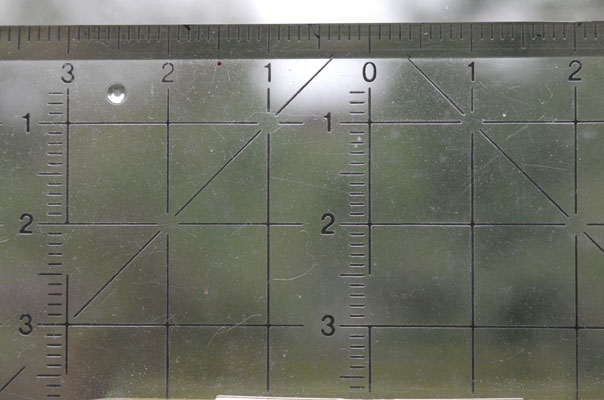
Marumi +5 achromat
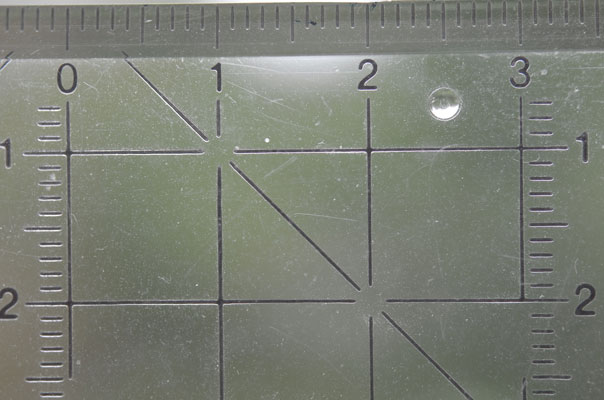
Dörr +10 achromat
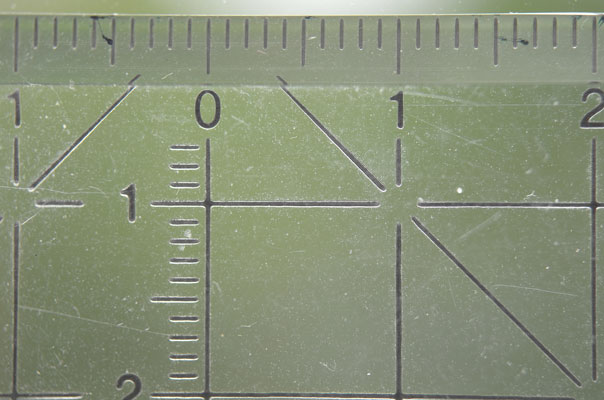
Marumi +5 and Dörr +10 achromats
Samples
Since the test setting was not appropriate for judging corner sharpness, I present only samples from about the top center.
Top Center
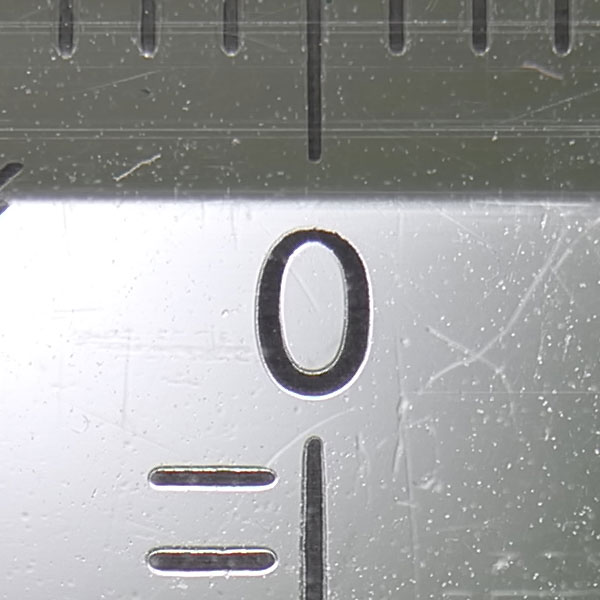
Marumi +5 achromat
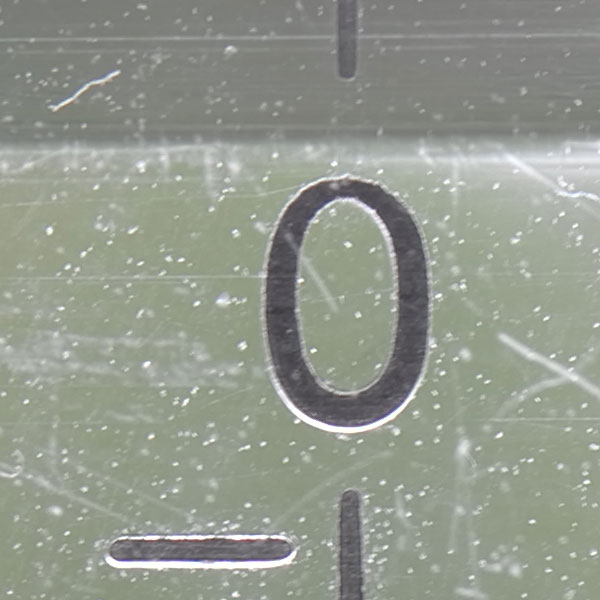
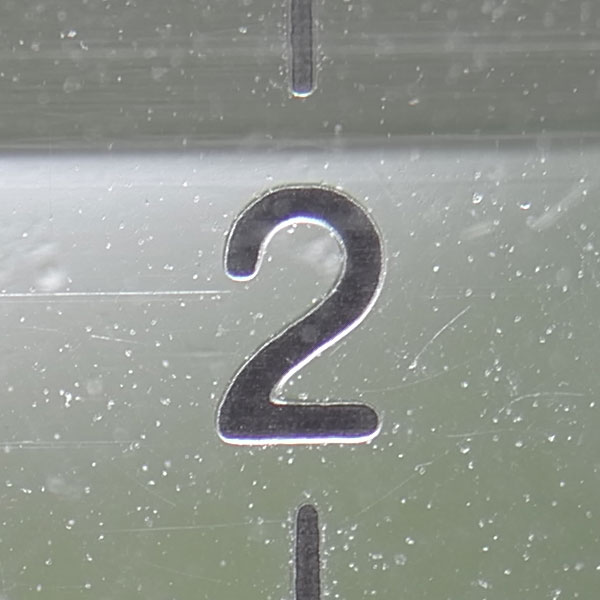
Dörr +10 achromat
Marumi +5 and Dörr +10 achromats
Conclusions
The test settings was not suited to judge corner sharpness. But there are even differences at the top center that may have been caused by the test setting. However, differences in image contrast are evident.
"Evaluation" Photos Take 2: Comparing Two Ways of Getting +10 Diopters
With the Dörr achromat, I now get +10 diopters with one lens. Before that, I stacked a Marumi +5 achromat with a B+W +5 close-up lens to achieve +10 diopters. Therefore, I was interested in finding out, which of the two solutions delivers better results. In theory, at least, this should be the Dörr achromat. And indeed, my quick-and-dirty tests confirmed this. Overall, the Dörr achromat produces sharper corners than the two stacked lenses. Both solutions improve when stopped down to f/11. At the center, there is little difference between the solutions and f-stops (f/6.4 and f/11). Moreover, the stacked lenses also show more chromatic aberration in the corners than the Dörr achromat.
Note that magnification is slightly larger for the Dörr +10 achromat than for the Marumi/B+W combination.
About the Test Photos
For my test photos, I placed the camera and the target on a table. However, with such large magnifications it was hard for me to create reliable test conditions. Often only the corners at the top or the bottom were fuzzy, indicating that the target was not placed evenly in front of the camera. After several attempts, I finally arrived at a setting, where all four corners were fuzzy, indicating that the target was aligned more or less evenly. A problem was also that I had to change the camera position when I switched between the lenses. I therefore was unable to assure that manual focus was set identically for both lens conditions and decided to use autofocus to assure correct focus.
Overview Photos
The following overview photos just serve the purpose of helping you find the regions that I have enlarged below. Click images for larger versions.
Dörr +10 achromat at f/6.4 (click image for larger version)
Dörr +10 achromat at f/11 (click image for larger version)
Marumi +5 achromat with a B+W +5 close-up lens at f/6.4 (click image for larger version)
Marumi +5 achromat with a B+W +5 close-up lens at f/11 (click image for larger version)
Upper Left Corner
|
Dörr +10 achromat at f/6.4 |
Dörr +10 achromat at f/11 |
|
|
Marumi +5 achromat with a B+W +5 close-up lens at f/6.4 |
Marumi +5 achromat with a B+W +5 close-up lens at f/11 |
Click images for 100% versions
Upper Right Corner
|
Dörr +10 achromat at f/6.4 |
Dörr +10 achromat at f/11 |
|
|
Marumi +5 achromat with a B+W +5 close-up lens at f/6.4 |
Marumi +5 achromat with a B+W +5 close-up lens at f/11 |
Click images for 100% versions
Lower Left Corner
|
Dörr +10 achromat at f/6.4 |
Dörr +10 achromat at f/11 |
|
|
Marumi +5 achromat with a B+W +5 close-up lens at f/6.4 |
Marumi +5 achromat with a B+W +5 close-up lens at f/11 |
Click images for 100% versions
Lower Right Corner
|
Dörr +10 achromat at f/6.4 |
Dörr +10 achromat at f/11 |
|
|
Marumi +5 achromat with a B+W +5 close-up lens at f/6.4 |
Marumi +5 achromat with a B+W +5 close-up lens at f/11 |
Click images for 100% versions
Center
|
Dörr +10 achromat at f/6.4 |
Dörr +10 achromat at f/11 |
|
|
Marumi +5 achromat with a B+W +5 close-up lens at f/6.4 |
Marumi +5 achromat with a B+W +5 close-up lens at f/11 |
Click images for 100% versions
Chromatic Aberration
Below are two examples from the lower left corner at f/6.4:
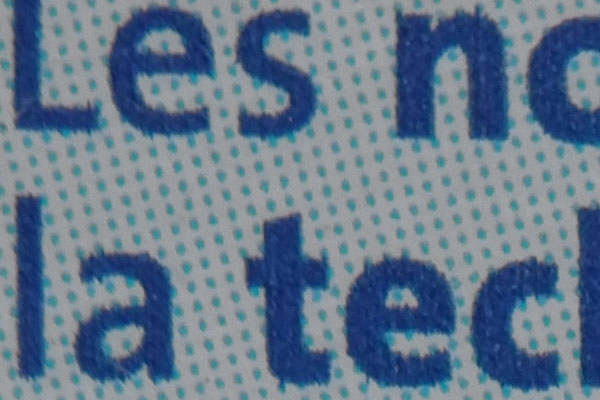
The Dörr +10 achromat at f/6.4 shows little chromatic aberration in the corners.

The Marumi +5 achromat with a B+W +5 close-up lens at f/6.4 shows clearly visible chromatic aberration in the corners (albeit it is barely visible in smaller sizes).
Photos: Finally +20 Diopters
Now think of the unimaginable: stacking the two achromats and the close-up lens together. That's crazy, one might say. And it's nearly impossible to take hand-held shots. But what about the image quality? As the samples below show, it is not as bad as one might expect.
Photos of the Assembly
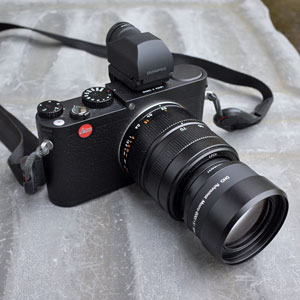 |
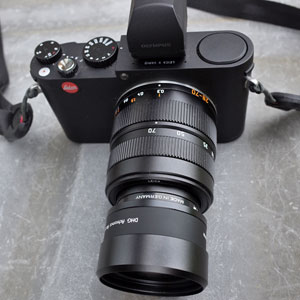 |
|
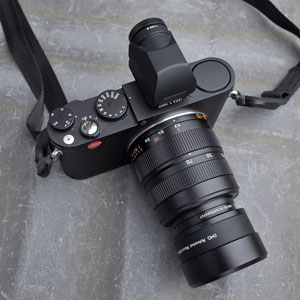 |
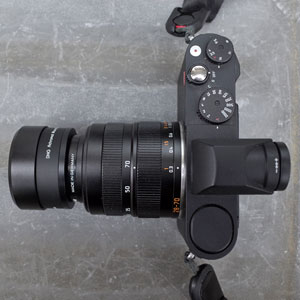 |
Click images for larger versions
Photos

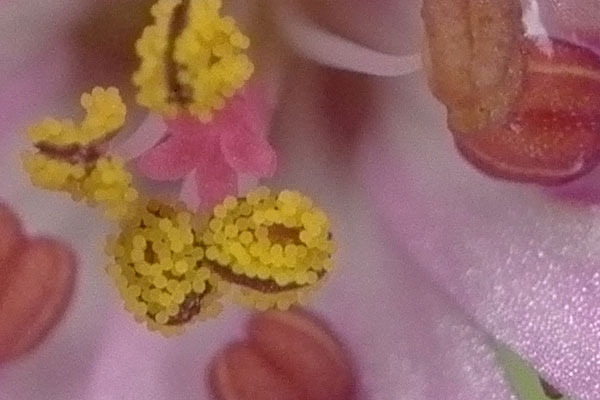
Detail



Detail
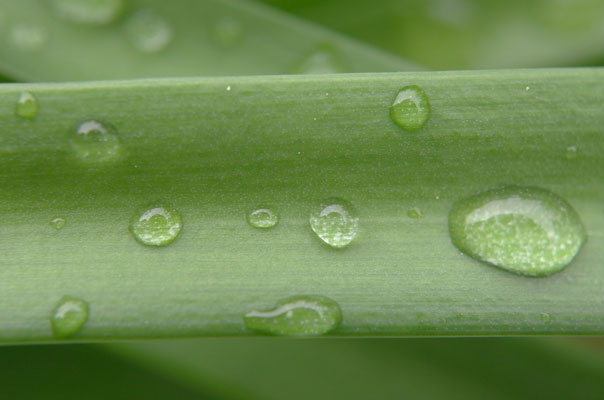


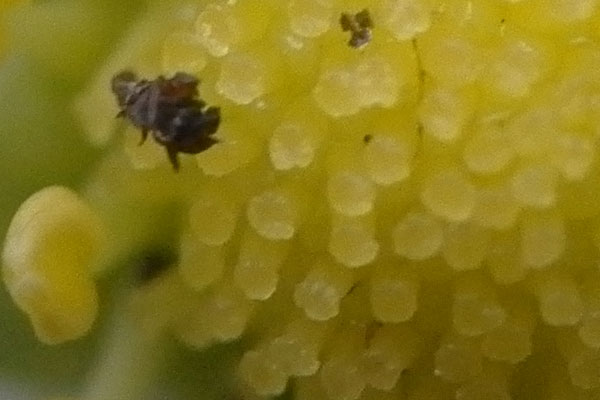
Detail - well, not really...
Conclusions
We get the following (about) magnifications for the achromats and their combination (I also include the combination with the B+W +5 close-up lens):
- No close-up lens: object width is about 12 cm > magnification = 0.2
- Marumi +5 achromat: object width is about 6 cm > magnification = 0.4 (about) (linear factor 2, area factor 4)
- Dörr +10 achromat: object width is about 4 cm > magnification = 0.6 (about)* (linear factor 3, area factor 9)
- Marumi +5 and Dörr +10 achromats: object width is about 3.1 cm > magnification = 0.75 (about) (linear factor nearly 4, area factor 15-16)
- Marumi +5 and Dörr +10 achromats, plus B+W +5 close-up lens: object width is about 2.6 cm > magnification = 0.9 (about) (linear factor 4.5, area factor about 20)
A first look at the photos in 100% suggests that the Marumi achromat used alone shows the best performance, particularly with respect to image contrast. The "field shots" with the Dörr achromat look acceptable, and even some of the photos taken with both achromats do so if they are not enlarged to 100%. However, using both achromats together requires an especially steady hand - and there is very little depth of field. And if you want and do not care too much for image quality and contrast, you can even stack a B+W +5 close-up lens on the back of the two stacked achromats - and need not be ashamed of the results (if you do not have the quality standards of dkpeterborough...).
Finally, the Dörr +10 achromat is a better solution to achieve +10 diopters than stacking a Marumi +5 achromat with a B+W +5 close-up lens. But this should not come as a surprise.
*) Note that this achromat is used in a slide copier!
| 03.04.2019 |
